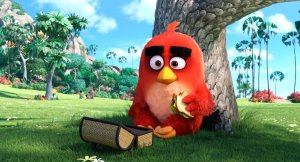
(dir. Neil Jordan). © Warner Bros., 1994.
My first book published in English was outcome of my PhD work conducted in late 1990s – The Demonic Texts and Textual Demons (Tampere University Press, 1999). As the subtitle hints (“The Demonic Tradition, the Self, and Popular Fiction”), this work was both a historically oriented inquiry into the demonic tradition across centuries, and an attempt to recast certain poststructuralist questions about textuality in terms of agency, or “Self”.
The methodological and theoretical subtext of this book was focused on politically-committed cultural studies on the one hand: I was reading texts like horror movies, classical tragedies, science fiction, The Bible, and Rushdie’s The Satanic Verses from perspectives opened up by our bodily and situated existence, suffering, and possibilities for empowerment. On the other hand, I was also interested in both participating and ‘deconstructing’ some of the theoretical contributions that the humanities – literary and art studies particularly – had made to scholarship during the 20th century. In a manner, I was turning “demonic possession” as a self-contradictory and polyphonic image of poststructuralism itself: the pursuit of overtly convoluted theoretical discourses (that both reveal and hide the actual intellectual contributions at the same time) particularly both fascinated and irritated me. The vampires, zombies and cyborgs were my tools for opening the black boxes in the charnel houses of twisted “high theory” (afflicted by a syndrome that I called ‘cognitocentrism’ – the desire to hide the desiring body and situatedness of the theorizing self from true commitment and responsibility in the actual world of people).
I have now produced a new version of this book online, as Open Access. After the recent merger of universities, the Tampere University Press (TUP) books are no longer available as physical copies, and all rights of the works have returned to the authors (see this notice). Since I also undertook considerable detective work at the time to secure the image rights (e.g. by writing to Vatican Libraries, and Warner Brothers), I have now also restored all images – or as close versions of the originals as I could find.
The illustrated, free (Creative Commons) version can be found from this address: https://people.uta.fi/~tlilma/Demon_2005/.
I hope that the new version will find a few new readers to this early work. Here are a couple of words from my Lectio Praecursoria, delivered in the doctoral defense at 29th March, 1999:
… It is my view, that the vast majority of contemporary demonic texts are created and consumed because of the anxiety evoked by such flattening and gradual loss of meaningful differences. When everything is the same, nothing really matters. Demons face us with visions which make indifference impossible.
Frans Ilkka Mäyrä (1999)
A cultural critic should also be able to make distinctions. The ability to distinguish different audiences is important as it makes us aware how radically polyphonic people’s interpretations really can be. We may live in the same world, but we do not necessarily share the same reality. As the demonic texts strain the most sensitive of cultural division lines, they highlight and emphasise such differences. Two extreme forms of reactions appear as particularly problematic in this context: the univocal and one-dimensional rejection or denial of the demonic mode of expression, and, on the other hand, the univocal and uncritical endorsement of this area. If a critical voice has a task to do here, it is in creating dialogue, in unlocking the black-and-white positions, and in pointing out that the demonic, if properly understood, is never any single thing, but a dynamic and polyphonic field of both destructive and creative impulses.






You must be logged in to post a comment.